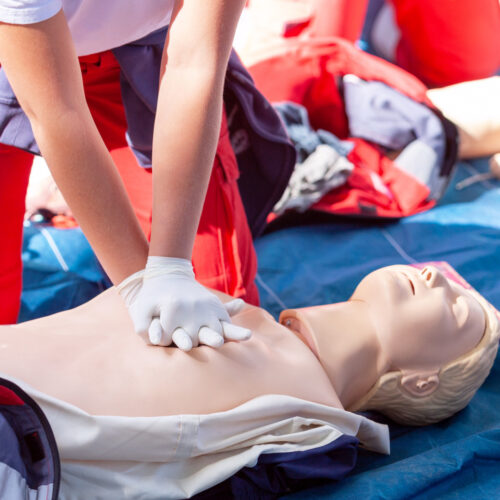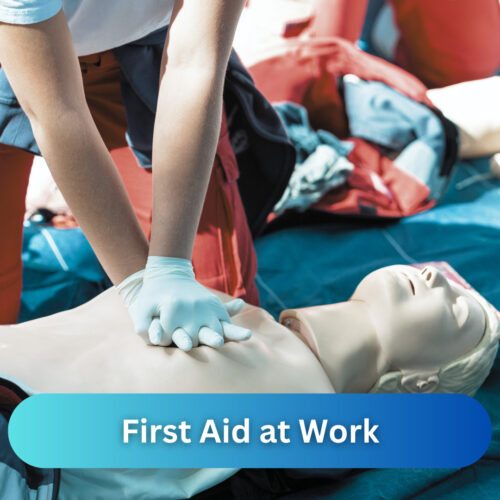- Have an increased awareness of the nature and properties of asbestos and its effects on health, including the increased risk of lung cancer for asbestos workers who smoke.
- Be familiar with the types, uses and likely occurrences of asbestos in buildings and where appropriate items of plant.
- Know how to avoid the risks from asbestos by understanding.
- Where to obtain information on asbestos in premises prior to commencing work.
- What to do if suspicious materials are found.
- How to use appropriate workplace precautions, including the risk assessment process, or seek advice on workplace precautions, in respect of the risks of asbestos.
- Undertake work activities in a safe manner and without risk to themselves or others.
- Have an awareness of the key aspects of the asbestos regulations and how they fit into the broader context of health and safety legislation.
- Procedures to be followed when coming into unintentional contact with asbestos containing materials (ACMs) and an understanding of the appropriate emergency arrangements.
-
 Asbestos Awareness Asbestos awareness training is required to be given to employees whose work could foreseeably expose them to asbestos. In particular, it should be given to all demolition workers and those workers in the refurbishment, maintenance and allied trades. Asbestos awareness training is not training to work with any forms of asbestos. It is likely to form the first part of training for work with asbestos, but on its own it is does not meet the legal requirements laid down under Control of Asbestos Regulations 2012 (CAR). The course objective is to provide an awareness and develop the knowledge amongst employees as regards the hazards and risks posed by asbestos containing materials (ACMs). The course further gives an overview of the legislative measures in place to permit employees to safeguard themselves and others affected by work activities. Learning Objective On successful completion of this course, delegates should be able to:
Asbestos Awareness Asbestos awareness training is required to be given to employees whose work could foreseeably expose them to asbestos. In particular, it should be given to all demolition workers and those workers in the refurbishment, maintenance and allied trades. Asbestos awareness training is not training to work with any forms of asbestos. It is likely to form the first part of training for work with asbestos, but on its own it is does not meet the legal requirements laid down under Control of Asbestos Regulations 2012 (CAR). The course objective is to provide an awareness and develop the knowledge amongst employees as regards the hazards and risks posed by asbestos containing materials (ACMs). The course further gives an overview of the legislative measures in place to permit employees to safeguard themselves and others affected by work activities. Learning Objective On successful completion of this course, delegates should be able to: -

Course Overview
The two-day Temporary Works Co-ordinator Training Course (TWCTC) is designed to assist those on site who have responsibility for managing all forms of Temporary Works. This course is not a general awareness course, its main focus is teaching roles and responsibilities a Temporary Works Co-ordinator would have. The TWCTC course will cover the following topics:- the need for and duties of a TWC
- the other key roles involved in temporary works
- the use of BS 5975:2019 in relation to the role
- typical documents used in temporary works
- other legislation and guidance that interact with temporary works
- the importance of the 4Cs: communication, co-ordination, co-operation and competence
- the need for risk management.
- Successful candidates will receive a Site Safety Plus accredited certificate upon completion, this certificate is valid for 5 years.
-

CITB – Health and Safety Awareness
Overview This course highlights potential hazards when working on site and provides practical advice on keeping yourself and your colleagues safe. It covers your individual and employer’s responsibilities, including what you can do if you think anyone’s health and safety is being put at risk. At the end of the course you will have an understanding of:- the need to prevent accidents
- health and safety law
- how your role fits into the control and management of the site risk assessments and method statements
- performing safely and asking for advice
- how to report unsafe acts to prevent an accident
-
 When working in confined spaces (CS) workers can become trapped or overcome by fumes, vapours, poisonous or explosive gases. Avoidable accidents happen in a wide range of industries as CS are not just tanks, vessels or chambers – spaces do not have to be totally enclosed to be considered ‘confined’. This course is about working in CS environments where there is a medium risk that a specified hazard may be present with also focusing on the time taken to evacuate increases risk to entrants. It will require the use of escape breathing apparatus. Employers must identify if a work activity, hazards and area of work is, or should be classed as a CS. Anyone working in a CS must be properly trained.
When working in confined spaces (CS) workers can become trapped or overcome by fumes, vapours, poisonous or explosive gases. Avoidable accidents happen in a wide range of industries as CS are not just tanks, vessels or chambers – spaces do not have to be totally enclosed to be considered ‘confined’. This course is about working in CS environments where there is a medium risk that a specified hazard may be present with also focusing on the time taken to evacuate increases risk to entrants. It will require the use of escape breathing apparatus. Employers must identify if a work activity, hazards and area of work is, or should be classed as a CS. Anyone working in a CS must be properly trained.Course objectives/outcomes
Confined Space legislation Laws & Regulations relating to CS- Responsibilities of employers and employees
- Definitions and types of CS
- Hazards and risks – necessary precautions required
- Understanding safe systems of work with particular reference to ‘permits to work’ where appropriate
- Emergency procedures
- Prepare and use escape breathing apparatus in accordance with manufacturers instructions
- Practical session demonstrating safe exit procedures where delegates use breathing apparatus and 20mtr rescue winch.
- Test paper/ questions/ handouts and review
- Good understanding of spoken and written English.
Delegates are required to have the following PPE
- Steel Toe Capped Safety Boots with Mid Sole Protection
- Safety Helmet
- Hi-Viz Vest at minimum
-
 Course Overview Are you aware of how to recognise red flags? Mental Health Aware course will give you a great awareness and insight into Mental Health. WHAT WILL YOU LEARN
Course Overview Are you aware of how to recognise red flags? Mental Health Aware course will give you a great awareness and insight into Mental Health. WHAT WILL YOU LEARN- What is mental health?
- Mental Health Continuum
- Factors which affect mental health
- Stigma
- Stress and stress management
- Spotting signs of distress
- Mental health conditions:
- Depression
- Anxiety disorders
- Psychosis
- Eating disorders
- Suicide
- Self-harm
- Recovery
- Take 10 Together – starting a supportive conversation
- Supporting mental health in the workplace
- Useful statistics
- Helpful resources
-

What is Mental Health First Aid?
The skills and knowledge developed on this course include:- An understanding of mental health and the factors that affect mental wellbeing
- Practical skills t0 notice triggers and signs of ill mental health
- Confidence to intervene, listen and support and individual in need
- Knowledge of helpful resources to guide recovery
- Learn valuable interpersonal skills such as non judgemental listening
- Understand how to build a wellbeing action plan to support employees in their organisation
-

SMSTS Refresher
This course is for you if you have previously passed the Site Management Safety Training Scheme (SMSTS) course, or a subsequent refresher course. At the end of the course you will be able to:- implement all updated health, safety, welfare and environmental legislation which affects your management role
- implement new guidance and industry best practice
- fulfil your duties and responsibilities with regards to health, safety, welfare and the environment
-

SSSTS
Overview At the end of the course you will have an understanding of:- health and safety law and how it applies to supervisors
- your supervisory responsibilities in controlling site safely
- risk assessments and the need for method statements
- effective site inductions, toolbox talks and method statement briefings monitoring site activities effectively
- timely intervention when bad practice is identified
-

SSSTS Refresher
Overview This refresher brings your health and safety knowledge up to date, as well as giving you a thorough overview of the legislative changes and their impact in the workplace. It builds on the material in the original course. At the end of the course you will be able to:- implement all updated health, safety, welfare and environmental legislation affecting your supervisory role
- implement new guidance and industry best practice affected by changes
- fulfil your responsibilities regarding health, safety, welfare and the environment.
-

What is Emergency First Aid at Work?
The Emergency First Aid at Work training syllabus covers:- Understand the role and responsibilities of the first aider
- Recording and reporting of accidents and incidents including RIDDOR
- Contents of a first aid kit (including preventing cross infection)
- Unconscious (including seizure)
- Cardiopulmonary resuscitation (CPR)
- Choking
- Wounded and bleeding
- Suffering from shock
- Anaphylactic Shock
- Stroke
- Asthma
- Heart Attack including Angina
- Diabetes
- Fractures
-
 This course covers the full syllabus, as outlined by the First Aid Approved Code of Practice 2009. The course will teach the student how to deal with:-
This course covers the full syllabus, as outlined by the First Aid Approved Code of Practice 2009. The course will teach the student how to deal with:-- Resuscitation
- Bleeding
- Care of the unconscious casualty
- Shock
- Hypoxia
- Diabetic and epileptic emergencies
- Burns
- Fractures
- Poisoning
- Infection control
- Simple record keeping.

